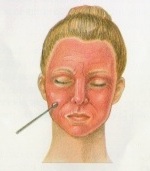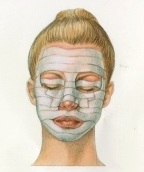| As the skin
heals, crusts begin to form and some tingling and
itching may occur. Cool compresses can reduce
these sensations. After the crusts fall off, the
skin appears quite pink, but this coloration
fades in a few weeks. During this period, special
ointments, soaps and cosmetics may be
recommended. The sun must not be exposed to
direct or reflected sunlight for several months
and sunscreen should be worn at all times when
out of doors. Thousands
of patients who undergo chemical peels each year
are delighted with the results. The amount of
improvement is individual and depends upon the
initial condition of the patient's skin. Maximum
improvement of damaged skin ranges from 75% to
85%, and, although 100% improvement is not
possible, most patients view the results as
dramatic. Some patients may require additional
treatments to achieve the desired results.
Although complications are
rare, there are certain inherent risks connected
with every surgical procedure which should be
thoroughly discussed with Dr. Washak before the
surgery. Patients can minimize complications by
carefully following directions given by Dr.
Washak.
|
 Chemical Peel
Chemical Peel



